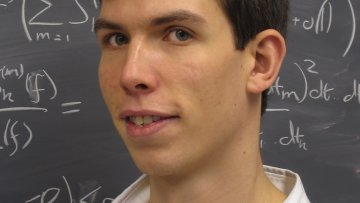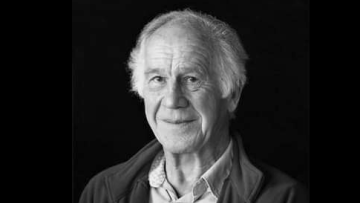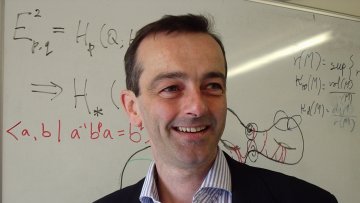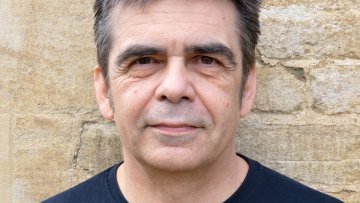Oxford Mathematicians James Maynard has been elected to Academia Europaea. He joins 13 other Oxford Mathematicians in the Academy which boasts 4000 members and 70 Nobel laureates.
TDA analysis of flow cytometry data in acute lymphoblastic leukaemia patients
Abstract
High dimensionality of biological data is a crucial element that is in need of different methods to unravel their complexity. The current and rich biomedical material that hospitals generate every other day related to cancer detection can benefit from these new techniques. This is the case of diseases such as Acute Lymphoblastic Leukaemia (ALL), one of the most common cancers in childhood. Its diagnosis is based on high-dimensional flow cytometry tumour data that includes immunophenotypic expressions. Not only the intensity of these markers is meaningful for clinicians, but also the shape of the points clouds generated, being then fundamental to find leukaemic clones. Thus, the mathematics of shape recognition in high dimensions can turn itself as a critical tool for this kind of data. This is why we resort to the use of tools from Topological Data Analysis such as Persistence Homology.
Given that ALL relapse incidence is of almost 20% of its patients, we provide a methodology to shed some light on the shape of flow cytometry data, for both relapsed and non-relapsed patients. This is done so by combining the strength of topological data analysis with the versatility of machine learning techniques. The results obtained show us topological differences between both patient sets, such as the amount of connected components and 1-dimensional loops. By means of the so-called persistence images, and for specially selected immunophenotypic markers, a classification of both cohorts is obtained, highlighting the need of new methods to provide better prognosis.
Topological representation learning
Abstract
Topological features as computed via persistent homology offer a non-parametric approach to robustly capture multi-scale connectivity information of complex datasets. This has started to gain attention in various machine learning applications. Conventionally, in topological data analysis, this method has been employed as an immutable feature descriptor in order to characterize topological properties of datasets. In this talk, however, I will explore how topological features can be directly integrated into deep learning architectures. This allows us to impose differentiable topological constraints for preserving the global structure of the data space when learning low-dimensional representations.
Geometric Fusion via Joint Delay Embeddings
Abstract
This talk is motivated by the following question: "how can one reconstruct the geometry of a state space given a collection of observed time series?" A well-studied technique for metric fusion is Similarity Network Fusion (SNF), which works by mixing random walks. However, SNF behaves poorly in the presence of correlated noise, and always reconstructs an intrinsic metric. We propose a new methodology based on delay embeddings, together with a simple orthogonalization scheme that uses the tangency data contained in delay vectors. This method shows promising results for some synthetic and real-world data. The authors suspect that there is a theorem or two hiding in the background -- wild speculation by audience members is encouraged.
Oxford Mathematician Bryan Birch has been awarded the Royal Society's Sylvester Medal for 2020 for his work in driving the theory of elliptic curves through the Birch--Swinnerton-Dyer conjecture and the theory of Heegner points.
Invariants for tame parametrised chain complexes
Abstract
Persistence theory provides useful tools to extract information from real-world data sets, and profits of techniques from different mathematical disciplines, such as Morse theory and quiver representation. In this seminar, I am going to present a new approach for studying persistence theory using model categories. I will briefly introduce model categories and then describe how to define a model structure on the category of the tame parametrised chain complexes, which are chain complexes that evolve in time. Using this model structure, we can define new invariants for tame parametrised chain complexes, which are in perfect accordance with the standard barcode when restricting to persistence modules. I will illustrate with some examples why such an approach can be useful in topological data analysis and what new insight on standard persistence can give us.
Oxford Mathematicians Martin Bridson and Endre Suli have been elected to Academia Europaea.





